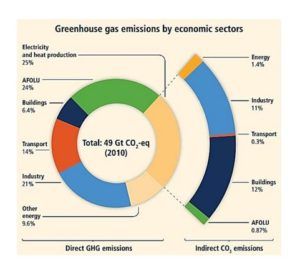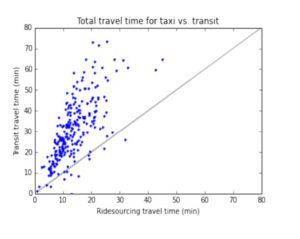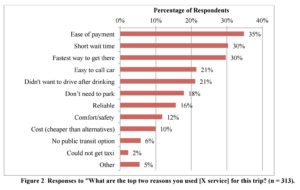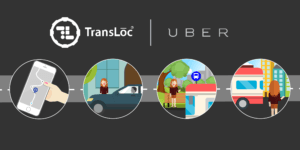Mystery of Uber’s Sharing Economy: Eco-friendly hero or a new form of hyper-consumption?

Success stories of Silicon Valley start-ups Airbnb and Uber have created a remarkable interest on the Sharing Economy. Environmental impacts of sharing economy remains controversial yet. “Sharing economy is framed in contradictory ways :ranging from a potential pathway to sustainability , to a nightmarish form of neoliberalism”
The Sharing economy refers to peer to peer on-demand economic activities such as home rental or transport pooling services. Success stories of Silicon Valley start-ups Airbnb and Uber have created a remarkable interest on that type of business model. Environmental impacts of sharing economy remains controversial yet. “Sharing economy is framed in contradictory ways :ranging from a potential pathway to sustainability , to a nightmarish form of neoliberalism” [I]
Contrasting and conflict views on environmental impact of the Sharing Economy
Economic exchange of assets across peers to gain economic benefits minimizing the cost and creating a user friendly experience is the basic form of the sharing economy. However, scholars have developed contrasting framings for the sharing economy. Supporters describe the sharing economy as “1) an economic opportunity; 2) a more sustainable form of consumption; and, 3) a pathway to a decentralized, equitable and sustainable economy. Whilst, actors resisting the development of the niche employ three different framings — the sharing economy is: 4) creating unregulated marketplaces; 5) reinforcing the neoliberal paradigm; and, 6) an incoherent field of innovation.” [II].
Where are we riding for by Uber?
 “Transportation is responsible for 26% of U.S. CO2 emissions, making it the second largest source behind electricity with 30%”.[III]. There are tremendous efforts to reduce emissions in various innovative ways such as biofuels ad electric cars. Uber could be a key driver or those efforts or could work against sustainability.
“Transportation is responsible for 26% of U.S. CO2 emissions, making it the second largest source behind electricity with 30%”.[III]. There are tremendous efforts to reduce emissions in various innovative ways such as biofuels ad electric cars. Uber could be a key driver or those efforts or could work against sustainability.
There are potential eco-friendly outcomes of Uber’s business model. Most of the benefits from Uber’s value creation come from creating more efficient private vehicle network. For instance, increasing mileage efficiency of individual cars could decrease CO2 emission per mile.[4] Moreover, passenger per car ratio in private cars could be enhanced via Uber pooling. There are also arguments that Uber value proposition could decrease the private car ownership which could finally lead to lower CO2 emission per person [5].
 Public transport is one of the most effective solutions against climate change. However, Uber is considered as a threat to public transport raising concerns about its role in climate change. Creating a more affordable and convenient private car experience could incentivize passengers to switch from public to private transport.
Public transport is one of the most effective solutions against climate change. However, Uber is considered as a threat to public transport raising concerns about its role in climate change. Creating a more affordable and convenient private car experience could incentivize passengers to switch from public to private transport.
Is sustainability sustainable for Uber?
 Potential implications of climate change on Uber’s business could be evaluated across four dimensions. First, there is a risk of more regulatory environment for Uber since many regulators and policy makers are concerned about the negative impacts of the company on public transport and CO2 emissions. Secondly, Uber’s role in sustainability is very likely to impact customer perception. Current target customers are young, educated and environmentally sensitive passengers in relatively more developed countries. Uber’s adaptation to more eco-friendly business model could create mitigate those risk and create further opportunities getting the support of regulators, public and customers. However, cost of sustainability measures could hinder competitiveness of Uber’s model against key rivals, private cars and public transport especially in emerging markets.
Potential implications of climate change on Uber’s business could be evaluated across four dimensions. First, there is a risk of more regulatory environment for Uber since many regulators and policy makers are concerned about the negative impacts of the company on public transport and CO2 emissions. Secondly, Uber’s role in sustainability is very likely to impact customer perception. Current target customers are young, educated and environmentally sensitive passengers in relatively more developed countries. Uber’s adaptation to more eco-friendly business model could create mitigate those risk and create further opportunities getting the support of regulators, public and customers. However, cost of sustainability measures could hinder competitiveness of Uber’s model against key rivals, private cars and public transport especially in emerging markets.
Step towards the eco-friendly mobility?
 Uber’s strategy is to adapt sustainable models across the whole operating model starting from building collaborations with key stakeholders in the ecosystem such as policy makers, researchers and NGOs. Uber is also trying to leverage UberPool, where more efficiencies are achieved due to higher passenger per car ratio, as a tool to protect brand reputation.
Uber’s strategy is to adapt sustainable models across the whole operating model starting from building collaborations with key stakeholders in the ecosystem such as policy makers, researchers and NGOs. Uber is also trying to leverage UberPool, where more efficiencies are achieved due to higher passenger per car ratio, as a tool to protect brand reputation.
Over the long run, Uber is investing on innovation to create a totally sustainable business. Uber claims that “Over the next few weeks we will be working to bring select riders an alternative trip that is 100% electric and free of carbon emissions.” [6] Electricity cars, self-drive private transport, business transport and public transport are the areas that Uber can significantly contribute to sustainability [7].
Sustainability as a competitive edge: Keep innovating to create solutions to the greatest challenges
My recommendation for Uber is to fully embrace sustainability as a competitive edge and push boundaries for innovating for the competitive edge as in the case of Tesla. Uber should be more proactive rather than being reactive and own the leadership of collaboration efforts across the whole transportation ecosystem. In the short term, Uber could also incentivize eco-friendly experience putting standards for drivers as supply chain partners. I strongly encourage the long-term vision of Uber to innovate for sustainability. Focusing on more renewable energy resources and solving the challenges of public transport to make it more appealing could not only contribute Uber’s brand reputation but also drive both topline and bottom-line of the company strategically.
(750 words)
References
[1] The sharing economy: A pathway to sustainability or a nightmarish form of neoliberal capitalism?http://www.sciencedirect.com/science/article/pii/S0921800915004711
[2] The sharing economy: A pathway to sustainability or a nightmarish form of neoliberal capitalism?http://www.sciencedirect.com/science/article/pii/S0921800915004711
[3] Climate Change in 2016: Implications for Business, https://hbp.app.box.com/s/nvq1l6fepuym2y52qxtsjigwuxsjsymk
[4] App-Based, On-Demand Ride Services: Comparing Taxi and Ridesourcing Trips and User Characteristics in San Francisco, http://www.uctc.net/research/papers/UCTC-FR-2014-08.pdf
[5] ‘Sharing Economy’ Will Save Our Economy and the Environment, http://www.environmentalleader.com/2014/07/17/sharing-economy-will-save-our-economy-and-the-environment/#ixzz4P4osxFNC
[6] Ubergreen, A Step Towards Eco-Friendly Mobility, https://newsroom.uber.com/south-africa/ubergreen/
[7] Uber and Lyft Want to Replace Public Buses, https://www.bloomberg.com/news/articles/2016-08-15/uber-and-lyft-want-to-replace-public-buses
Links for visuals (pictures and exhibits in the order of appearance)
[1] http://www.greeneileen.org/join-the-sharing-economy/
[2] http://www.huffingtonpost.com/milena-miliaeeviae-/opportunities-in-sharing-_b_11331630.html
[3] https://hbp.app.box.com/s/nvq1l6fepuym2y52qxtsjigwuxsjsymk
[4] http://www.uctc.net/research/papers/UCTC-FR-2014-08.pdf
[5] http://www.uctc.net/research/papers/UCTC-FR-2014-08.pdf
[6] http://transloc.com/transloc-and-uber-partner-to-pioneer-a-new-standard-in-public-transit





Ayhan, this is a very interesting post and something I think about often as well, as a consumer of Uber’s product. Your article made me think that in fact Uber should, as you argue, double down on sustainability as it may in fact be a better path to convenient, sustainable transportation than large-scale public transport systems. While governments may claim that Uber threatens public transportation which is a “more sustainable” alternative, public transportation faces a lot of challenges and huge inefficiencies that Uber can leapfrog. Uber has already built out in a couple of years a transportation network that rivals (or at least complements) the MBTA in Boston. Their current investments in emission-free vehicles are to be applauded and supported by government and not inhibited for political reasons.
I’m also on the side that Uber net-net is reducing emissions versus increasing them.
1) Uber’s pricing policy drives consumer behavior, in particular they currently charge more for single-rdier uber trips vs. uber pool – the more they widen that gap, the more appealing carpooling will seem to consumers. However you could argue that this would only work if all ride services agreed that encouraging pooling is important (not only economically but socially) and set a wide margin, because otherwise you could shift demand towards certain ride companies that don’t structure rides this way.
2) I agree with Ross’s point that existing public transportation is deficient in many regions. I would add that by making rides-on-demand available, you disincentive a lot of potential car buyers from owning their own vehicle, which would generate more emissions over the car’s life cycle.
I agree to some degree that Uberpool drive sharing economy that reduce consumption, however, the fact that traffic is getting worse in cities like san francisco, where people used to either take public transportations, or walk, and who now switched to cars, make me question if there is overuse out of it. Would people prefer to pay $2 to ride bus with 50 other people, or $3 to carpool with 1-2 others? If latter, then end result is you have 10 more cars’ energy consumption and emission vs 1 bus. I think lower the cost does result in overuse to some point, and therefore just how “green” is the sharing economy is up to debate.
I also have very mixed feelings about whether Uber’s model results in more sustainable practices overall. At least in urban areas, I see that Uber is being increasingly used as a “substitute” for more eco-friendly mass transit. I know that HBS students definitely are utilizing Uber pool heavily when in the past, they may have thought twice about hiring a relatively expensive taxi and chosen to walk into Cambridge to hop on the T. I think Uber is going to have to look at the sustainability of its fleet and try to shift more and more to eco-friendly cars over time to really be have an impact.
Hi Ayhan,
Thank you for writing such an interesting post on a relevant company. With regards to your recommendation, I am curious about the concrete actions that Uber can take to drive both sustainability and the bottom-line. “Innovate” is a fluffy concept. Do you have a plan? Some concrete sustainability ideas that I came up with make little sense from a profitability perspective. For example,
1. Restricting supply to environmentally friendly cars => Less supply => More expensive rides => Fewer customers => Less revenue
2. UberPool exists already. What else can they do?
3. Sponsor electric cars => Direct expense for Uber => Really net positive in terms of brand and appeal??
Uber relies on whatever cars people have, so as people buy eco-friendly cars Uber will become eco-friendly as well. Do you have any ROI positive steps that Uber can take to speed up the transition?
Great thoughts – thank you for sharing with us. I am personally of two minds when it comes to whether Uber and similar ride-hailing startups are helping to decrease emissions or ultimately resulting in a net increase. On one hand, I simply do not believe there is enough data to allow us to conclude one way or another, which is fine in my opinion. Uber must be allowed to keep confidential their vast amounts of data on their customers in order to prevent competitors from gaining an advantage. On the other hand, my instinct is that over time, any doubts here can be resolved, despite us not having the data, if Uber effectively transitions its fleet of cars to comprise increasingly of low emission hybrid or electric vehicles.
Like many of those above, I am concerned that Uber has resulted in the unintended consequence of creating, rather than reducing, traffic in urban centers. I am curious what you think about how UberPool plays into this effect. On the one hand, it is more sustainable to maximize persons per ride. On the other hand, as the cost of UberPool increasingly competes with the cost of public transportation, UberPool is incentivizing those who would typically use public transportation to use UberPool instead. Since public transportation is the most sustainable form of transportation, do you think Uber should keep/eliminate its UberPool option in cities?
Interesting article on a highly relevant company. While I agree with many of your points that overall, Uber will make transportation more efficient by decreasing vehicle ownership, increasing mileage efficiency and offering a viable option in areas where public transportation is lacking, I wonder about how they could implement your suggestion to focus more on renewable technologies given the fact that they are not an automotive manufacturer.
In contrast to Uber, I believe that their main competitor, Lyft, is actually in a position to influence OEMs to adopt more sustainable technologies. Through its recent partnership with GM, Lyft could perhaps adopt many of the suggestions you lay out, increasing the way their brand is perceived in the future. It will be interesting to see if Uber will follow suit and partner with another major OEM to drive more sustainable innovations and mitigate any potential negative implications associated with their brand in the future. If not, I would be curious to see how these two businesses diverge and what the potential impact is to their brands, if any, going forward.
Ayhan – this is a very interesting topic and thank you so much for sharing your thought. Although I fully agree with your idea on embracing sustainability within the value proposition of Uber, I have some reservation on how this will be impactful to convince the government to allow Uber’s operation especially in emerging markets such as China, India and Southeast Asia. In those markets, sustainability is still a secondary priority for the government, and they are much more concerned about the impact on employment of existing industries (e.g., Uber got a strong backlash by taxi industry in Jakarta). I believe it is important for Uber to keep multiple propositions to bring to the government (create new employment, reduce congestion, make the people’s lives more convenient) and use them tacitically depending on the government’s interests when they lobby to the government.
Very interesting article. While I definitely can understand why some are concerned that the rise of private ride-sharing may inadvertently increase CO2 emissions by siphoning public transit users to private cars, I think the rise of Uber Pool and Lyft Line–which attract multiple riders at any given time–can help mitigate emissions by, a) get “more butts in seats” of cars that would otherwise have only 1 to 2 occupants (which is obviously inefficient from an emissions standpoint) and, b) make ride-hailing services more attractive in order to incentivize people to abandon car ownership altogether. The resulting de-cluttering of roads may even help increase emissions from stop-and-go traffic.
Abandoning car ownership altogether may in fact encourage public transit usage, perhaps encouraging a mix of ride-sharing and public transit. A study by the American Public Transportation Association supports this; the report suggested that services like Uber and Lyft “are most frequently used for social trips between 10 p.m. and 4 a.m., times when public transit runs infrequently or is not available. Shared modes substitute more for automobile trips than public transit trips.” (source: http://www.apta.com/resources/reportsandpublications/Documents/APTA-Shared-Mobility.pdf). Still, I think it may be time for public transit systems to invest in innovative solutions to make public transit similarly attractive and positioned to work alongside ridesharing which is surely here to stay.
Great post! I think Uber is really going to struggle to bring electric, eco-friendly options to riders. One of the best things about internal combustion cars is they can be gassed up in a few minutes. Even Tesla’s supercharger – the best in class charging solution – takes about 30 minutes for about 80% range. This could kill almost an hour of driving time for Uber drivers. I’m worried the tech just isn’t there yet and won’t be for a long time.
PS Uber is planning to do air transport too 🙂 https://www.wired.com/2016/10/uber-flying-cars-elevate-plan/
I was able to approach Uber’s strategy from a different angle thanks to some of the great analysis in this article. Since a lot of other comments discuss advantages of Uber’s current sustainability, I just wanted to share some of the concerns that the company might need to think about when implementing its strategies.
Recently, safety concerns with regards to self-drive cars have been discussed frequently in great detail, especially after a few accidents caused by Tesla’s new models. It is certainly desirable and ideal to promote the use of self-drive private transportation vehicle, but the potential risk of increased accidents could backfire and threaten the viability of such initiative.
On a different note, I thought it would be interesting for Uber to partner with manufacturers of eco-friendly cars to promote sustainability. The company could encourage its drivers to drive electric cars by offering incentives such as fuel subsidy or higher rate for certain distance travelled. As the number of drivers who drive eco-friendly cars and people become more aware of environment issues such as climate change, the role of Uber as an ambassador would be even more important in future.
Ayhan, I found your article really insightful. At first when I was reading, I didn’t necessarily associate Uber with sustainability when thinking about a private ride rather than pool – I thought of the private Uber ride more as a replacement for another similar private ride (taxi or driving one’s own vehicle). It’s really interesting that Uber is making a push to bring riders a 100% electric trip that is free of carbon emissions. I know that buses and other forms of public transportation have been working to do this, but I think that the concept of bringing sustainability to a private ride would be more successful and well received. I would be interested to see how Uber plans on converting its “fleet” though, since the cars are owned by the individual drivers rather than the corporation. If Uber would need to offer some incentive to its drivers to purchase electric cars, would the cost ultimately be passed down to the consumer?
I have very mixed feelings about how to perceive Uber. Because there are so many factors that could come into play namely short-term vs. long-term pricing, market reaction to Uber, Uber car of choice, etc.
I completely agree that Uber has a great chance to make a different and it can shape the future.
However, I have doubt of the long-term positive impact on the environment. Even with Uberpool people will still rely on cars. And even if I take it to the extreme that all Uber car run on electricity, the majority of electricity produced is from fossil fuel. The ideal scenario would be for everyone to use public transportation and to take sharing economy to the extreme. Buses or trains can hold a lot more people making it much more efficient than Uber.
To summarize, I believe that Uberpool and its sharing economy provide a great medium-term solution. However major transportation infrastructures are needed to build a more sustainable way for people to commute.